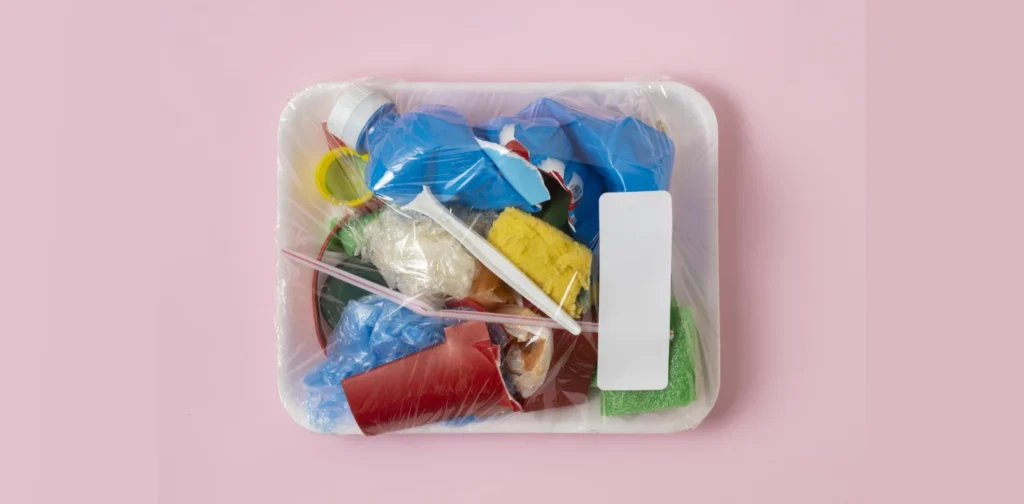Southeast Asians as the Biggest Microplastic Eaters

Photo: Freepik.
More and more people are becoming aware about how microplastics contaminate our environment. However, the threat is closer than we think. From the food we eat to the air we breathe, Earth’s populations are ingesting microplastic, with Southeast Asians being the biggest microplastic eaters.
Microplastic Around and Inside Us
Microplastic basically refers to all plastic particles smaller than 5 millimeters in size. Microplastic production is tied with industrial activities, especially in major developing and industrialized countries. For instance, the plastic packaging of consumer goods amounts to a huge amount of waste. When the plastic waste enters landfills without proper management, it will degrade improperly and turn into microplastics that contaminate our soil and water.
One way microplastic can enter our body is through seafood. Tiny organisms in water, like planktons, consume microplastic and are later eaten by fish and other ocean biodiversity. Then, humans become microplastic eaters when we eat contaminated seafood. Another way is through the air. Air-transmitted microplastic primarily comes from shredded plastic materials. In our daily life, tires and cutting boards are some examples.
Most studies about the harm of microplastic to the human body are still unclear. But, the potential impact to our health is found in infants and on mice. Research shows that microplastics in the body may cause intestinal injury, liver infection, microbial imbalance, fat accumulation, and eventually, metabolic disorders.
Microplastic Eaters
Unfortunately, we are becoming bigger and bigger microplastic eaters. A study in 109 countries showed an uptake in microplastic ingested by humans between 1990–2018, with developing countries bearing the brunt. According to the study, microplastic intakes within 95% of industrialized developing countries were much higher than in developed countries in Europe and North America.
The research revealed Southeast Asians as the biggest microplastic eaters in the world. Seven out of the top ten countries were in the region: Malaysia, Indonesia, the Philippines, Vietnam, Lao PDR, Thailand, and Cambodia.
On average, a human ingested microplastic the size of half of a credit card per month. Concerningly, Southeast Asians ingested up to three times the average number, with Malaysia and Indonesia at the peak. Meanwhile, the other five had slightly lower numbers, around two credit card sized microplastic intake per month.
Cleaning Up
The environmental and health impacts of microplastics are serious, and they get more severe as time goes. Therefore, clean-up is crucial. Scaling up the efforts to remove plastic debris from our oceans, which can decrease 55% of microplastic contamination, is an important action. Meanwhile, businesses can replace single-use plastic material with biobased degradable alternatives materials in food and beverages packaging.
Additionally, as Southeast Asia remains the ‘garbage dump’ for several developed countries, the issue of waste is more than a national or regional problem alone. National and international bodies must provide robust governance and interventions through improved policies surrounding food quality control, ocean conservation, and industrial waste management. After all, our environment, people, and countries must coexist on the same Earth.

Join Green Network Asia Membership
Amidst today’s increasingly complex global challenges, equipping yourself, team, and communities with interdisciplinary and cross-sectoral insights on sustainability-related issues and sustainable development is no longer optional — it is a strategic necessity to stay ahead and stay relevant.
Join Now

 Weaving the Thread Between the Last Elephant and the Floods in Sumatra
Weaving the Thread Between the Last Elephant and the Floods in Sumatra  Bringing Buried Rivers Back to Life Through Daylighting
Bringing Buried Rivers Back to Life Through Daylighting  Prescribing Beyond Profit for CEOs’ Anxiety
Prescribing Beyond Profit for CEOs’ Anxiety  An Interview with May Tan-Mullins, CEO and Provost of University of Reading Malaysia
An Interview with May Tan-Mullins, CEO and Provost of University of Reading Malaysia  An Interview with Eu Chin Fen, CEO of Frasers Hospitality
An Interview with Eu Chin Fen, CEO of Frasers Hospitality  The UK Government’s Funding Package Plan to Tackle Youth Unemployment
The UK Government’s Funding Package Plan to Tackle Youth Unemployment